What is our primary use case?
For our clients, vROps is used for managing their environments, having a single pane of glass, so they can go in and have a view of what's actually going on in their environments. That's especially true when it comes to TCO perspectives. When it comes to the TCO, they get to realize how they can start trimming down VMs that are not working, or cutting down on the resources that those VMs are using. That helps them do better in their environment and to lower their operational costs at the end of the day.
We do have the big enterprises; we've got quite an extensive team that looks after clients. But my clients are SMB clients and are where we see a need for vRealize Operations.
How has it helped my organization?
For me and my clients there's a very big benefit from a monitoring perspective. It provides proactive monitoring and helps instantly. It gives you this one dashboard with an overview of everything that you're busy with, within the environment. You can get notifications, on time, to deal with a situation and it also gives you references to what you can do and what you can't do, or what is recommended by VMware. It has links for you to find the resolution to the problem. From that perspective, it's brilliant. I don't think anybody could ever ask for anything over and above that. It's very proactive.
vROps has also enabled us to replace tools. SolarWinds is one.
What is most valuable?
The capacity planning is one of the most valuable features. That is brilliant. A lot of clients, especially now due to COVID-19, are in a situation where they don't have a lot of money to spend. They're looking at what the best way is to start cutting costs, especially from an IT perspective. A lot of companies look at it from an IT perspective rather than anything else when it comes to business. That's key.
Also, the integration with Blue Medora is brilliant, especially the way it can let you know if there is a problem in the environment, and various ways to fix the issue.
In addition, for me, it is seamless and easy to get to know. It's quite straightforward and it's a nice product. The user-friendliness is brilliant. At some point you need to just keep kicking and kicking until you get what you really want. But from a user perspective, it's quite straightforward in terms of being able to understand as to what is going on and how to get to specific pages. The first page gives you everything. It highlights everything: your risk, your health, and that kind of stuff, with the dashboard. It is quite easy to use, especially once you've kicked around a little. From there, I don't think you should even encounter an issue.
The integration with vRealize Log Insight is amazing for me. I don't think there's any other monitoring software that I'd choose or sell to a customer. That's especially true now from a vSAN perspective and getting the logging side integrated into the solution. The correspondence and the communication between the two products is great. I would always recommend going down that route.
For how long have I used the solution?
I've used vROps for about a year.
I have used it a handful of times when it comes to client deployment. But there's time required to get my head in the game with it, because there is a lot when it comes to the product itself. We are going to be installing it in our lab as well, to get more clarity around how it works, especially when it comes to the integration with Blue Medora and those kinds of things.
On a scale of one to 10, I'd say I'm probably a four when it comes to vROps, but I hope that I'll actually get to 10, to be the best in it. It's a very brilliant product. I love it, the way it works, all the functionality. Everything about it is just amazing.
What do I think about the stability of the solution?
The stability is great. On a scale of one to 10 I would put it at 10.
What do I think about the scalability of the solution?
The scalability is also great. I haven't played with it that extensively but, from my understanding and from what I know, you can scale as much as you need to. As long as you understand the dashboards and how to create them, you should be okay. From that perspective I think it rates quite well.
How was the initial setup?
The initial setup is straightforward. You just download the OBA and—"Bob's your uncle." The installation guide is also very helpful. They give you a step-by-step guide for how to deploy it. If you read the document, you'll be okay from the beginning until the end. You shouldn't have a problem.
If it's just a basic deployment, and if you've already got the OBA, it should only take a good 30 minutes, and that would be a lot. I'm just covering my bases, in case there is anything that may not have been taken into consideration. But plus/minus 30 minutes should be enough to do a basic deployment.
Currently there are five of us in the company who are using the product or who are familiar with the product. From a maintenance perspective, the dashboard does most of the job. One person can have a look at it and there are the rest of the guys on the back-end for support. I don't think it needs 10,000 people looking after the product. The product is an automated, driven process. You just need to look at the dashboard and understand what it says and it should make the job a lot easier. You shouldn't need more than one or two people looking at the product every day.
What was our ROI?
Overall, the value you get from a vRealize is definitely worth the cost.
What's my experience with pricing, setup cost, and licensing?
vROps is a bit expensive and that's a reason that small clients say, "No, I don't think we need this." From a pricing perspective, it is quite steep. But "expensive" is relative, depending on what you need. Others might say, "It is expensive, but I think we can use it to better our environment." It is quite an expensive product. But if you really require something, you'll do it anyway.
Which other solutions did I evaluate?
The main difference between vROps and the SolarWinds solution is the integration to the VMware stack in its entirety, and the opportunity to integrate it with different product sets, like Blue Medora. That makes it quite a different solution compared to SolarWinds which, as far as I know, doesn't have that type of integration. Maybe there is something new along those lines with SolarWinds and I just haven't looked at it, but I've never seen those types of integrations when it comes to SolarWinds.
What other advice do I have?
When we speak to clients about it they often say, "I'll think about it." I think the best thing for them to do would be to actually use it, with the 60-day trial. They should play around with the tool and then come back and say, "This is what I can do in the product." That way, they would see what the product is about. I'd rather they experience something than somebody else telling them about it. Clients have access to VMware. They can download the solution from wherever they are and then start playing with it. They need to see what it can do and realize, "Wow, what an amazing tool." They need to see the benefits of the tool. It's the best monitoring tool. It is expensive, but expensive is relative. It's a matter of the client having a play with the tool and realizing what an amazing tool we have.
My clients are quite small so when they do use it, it's when I'm with them. They don't understand what the product does. For me it's a big thing, but for them, it's neither here nor there. They say, "We'll deal with it when we can. We'll look into it whenever we've got the time." It's never the situation where I've come back and my client is saying "Wow, that is brilliant!" They say it's brilliant when I do it but they don't go back and start utilizing the tool. So I don't really always get the feedback that I desire.
One of my colleagues is busy with a deployment at one of our clients and he's also doing the Blue Medora integration. I talk to him on a daily basis just to get an update, and he's amazed at what vRealize can do. From that perspective I think that we're quite happy with the product.
Which deployment model are you using for this solution?
On-premises
Disclosure: My company has a business relationship with this vendor other than being a customer. Integrators.

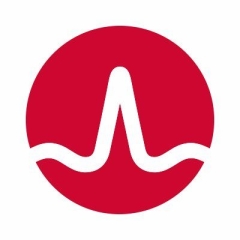

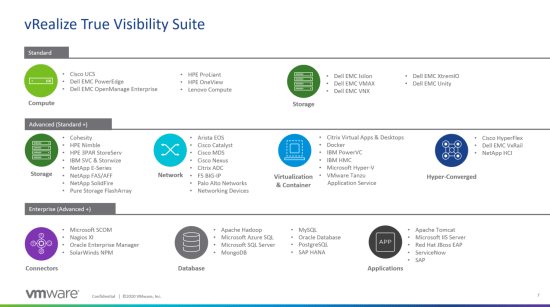
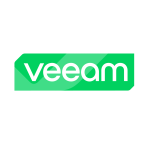

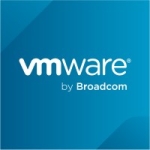
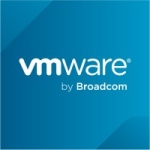











Good job brother, your review met almost the quality management cycle. Congrats